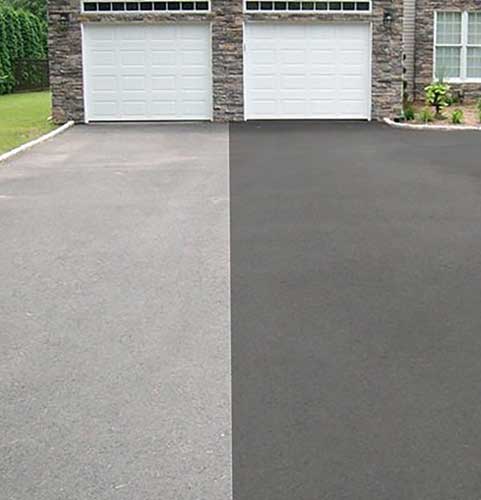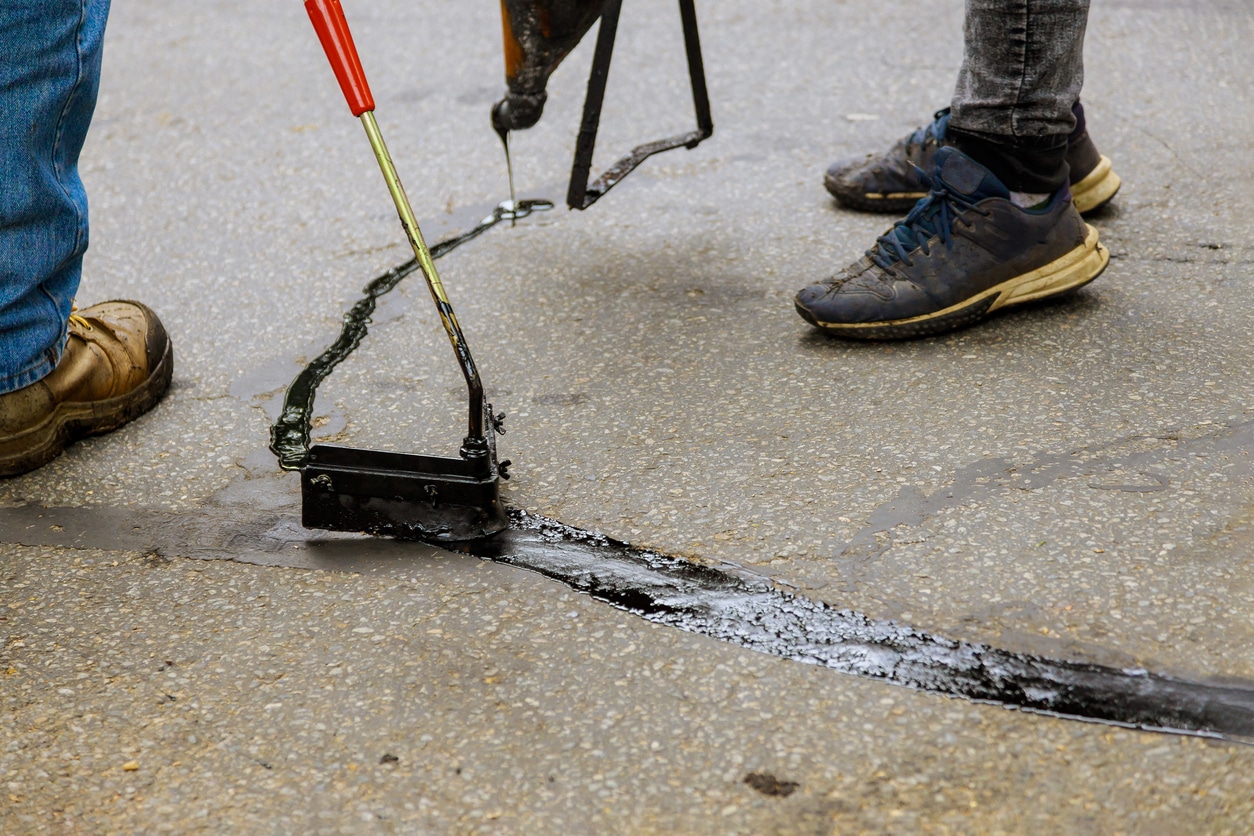Enhance Resilience: Warm Mix Asphalt Sealing for Angled Parking Structures
Wiki Article
Hot Mix Asphalt: A Sustainable Remedy for Pavement
Hot Mix Asphalt (HMA) has become a leading lasting option for sidewalk options, offering a myriad of ingenious technologies and environmental advantages. Its capability to reduce and recycle materials power consumption provides a compelling situation for its fostering in road building and construction tasks. The long-term performance and durability of HMA make it a preferred option for infrastructure growth. As the need for green building methods grows, checking out the nuances of HMA's sustainability can offer useful understandings into the future of pavement remedies.Environmental Benefits of Hot Mix Asphalt
In Addition, Warm Mix Asphalt assists to alleviate city heat island impacts. Its dark color takes in sunlight, decreasing the quantity of heat mirrored back into the atmosphere compared to lighter-colored sidewalks. This can decrease ambient temperatures in urban areas, lowering the demand for cooling and ultimately reducing energy intake.
Additionally, Hot Mix Asphalt contributes to improved stormwater monitoring. Its porous nature allows water to infiltrate the sidewalk and recharge groundwater supplies, lowering runoff and the threat of flooding. These environmental advantages make Warm Mix Asphalt a sustainable choice for leading roads and freeways.
Energy Performance in HMA Production
Is energy effectiveness an essential aspect in the production of Warm Mix Asphalt (HMA)? Power plays a significant duty in the manufacturing of HMA, affecting both cost and ecological sustainability. One crucial element of power efficiency in HMA manufacturing is the usage of warm mix asphalt (WMA) modern technologies.Furthermore, improvements in plant technologies have led to more energy-efficient HMA manufacturing procedures. By maximizing energy usage in HMA manufacturing, the industry can decrease its carbon impact while maintaining top notch sidewalk materials.
Recyclability of Hot Mix Asphalt
The recyclability of Hot Mix Asphalt (HMA) is a critical aspect of its sustainability and lasting environmental effect. HMA is one of one of the most recycled products in the United States, with over 100 million heaps of recovered asphalt sidewalk (RAP) being reused yearly in brand-new pavement building and construction. Reusing HMA uses a number of ecological advantages, such as reducing the demand for virgin products, decreasing energy consumption during manufacturing, and reducing the amount of waste sent to garbage dumps.The procedure of recycling HMA includes milling the existing pavement, crushing it into smaller sized pieces, and mixing it with brand-new aggregate and asphalt binder to produce a recycled mix. This recycled mix can usually do as well as or perhaps better than conventional HMA, while requiring fewer resources and producing lower greenhouse gas exhausts. By incorporating RAP right into brand-new sidewalk tasks, roadway companies can preserve natural deposits, reduce costs, and reduce the environmental footprint of road building and construction click here now and upkeep activities. Generally, the recyclability of HMA plays a considerable function in promoting lasting methods within the pavement market.

Long-Term Performance of HMA
Asphalt pavements demonstrate toughness and resilience over an extended duration, reflecting the long-term efficiency of Warm Mix Asphalt (HMA) The longevity of HMA can be associated to its capability to endure rush hour lots, rough weather, and the effects of aging. Studies have revealed that properly designed and correctly created HMA pavements can last for two decades or even more with regular upkeep. The trick to taking full advantage of the lasting performance of HMA depends on making use of top notch materials, following ideal practices in building and construction, and carrying out reliable upkeep methods. Correct drain, routine inspections, and timely repair work are necessary for maintaining the structural integrity of HMA pavements with time. Furthermore, developments in HMA technology, such as using polymer-modified binders and cozy mix asphalt, have actually further boosted the durability and long life of HMA sidewalks. By focusing on quality construction and maintenance techniques, HMA continues to prove itself as a economical and sustainable service for resilient sidewalk facilities.
HMA: Longevity and Sustainability
Demonstrating both longevity and sustainability, Hot Mix Asphalt (HMA) has actually come to be a keystone in the construction of lasting sidewalk frameworks - commercial parking lot paving. HMA's longevity stems discover this from its ability to hold up against heavy tons, harsh climate problems, and high traffic quantities, making it a trustworthy choice for streets, freeways, and flight terminal paths. The make-up of HMA, which commonly includes aggregates, binder, and filler, plays an important function in enhancing its durability and resistance to put on and tear
Furthermore, HMA's sustainability hinges on its recyclability and energy-efficient production process. The capacity to recycle recovered asphalt sidewalk (RAP) in new HMA combinations reduces the need for virgin products and lessens the environmental influence of sidewalk construction and upkeep. In addition, the power effectiveness of producing HMA exists in its reduced mixing temperature levels compared to other pavement materials, resulting in reduced energy consumption and greenhouse gas exhausts.
Conclusion
In verdict, click over here now warm mix asphalt (HMA) uses a sustainable solution for pavement with its environmentally friendly attributes. HMA's recyclability, power performance in manufacturing, and long-term durability make it an environmentally friendly choice for roadway building and construction.
HMA is one of the most recycled materials in the United States, with over 100 million lots of redeemed asphalt pavement (RAP) being reused annually in brand-new pavement building and construction.The process of reusing HMA involves grating the existing pavement, squashing it right into smaller sized pieces, and mixing it with new accumulation and asphalt binder to develop a recycled mix.Asphalt sidewalks demonstrate durability and resilience over an extensive period, showing the long-lasting performance of Warm Mix Asphalt (HMA) Additionally, advancements in HMA technology, such as the use of polymer-modified binders and warm mix asphalt, have actually further boosted the resilience and longevity of HMA sidewalks. The ability to recycle redeemed asphalt sidewalk (RAP) in new HMA combinations reduces the demand for virgin products and reduces the environmental impact of pavement building and upkeep.
Report this wiki page